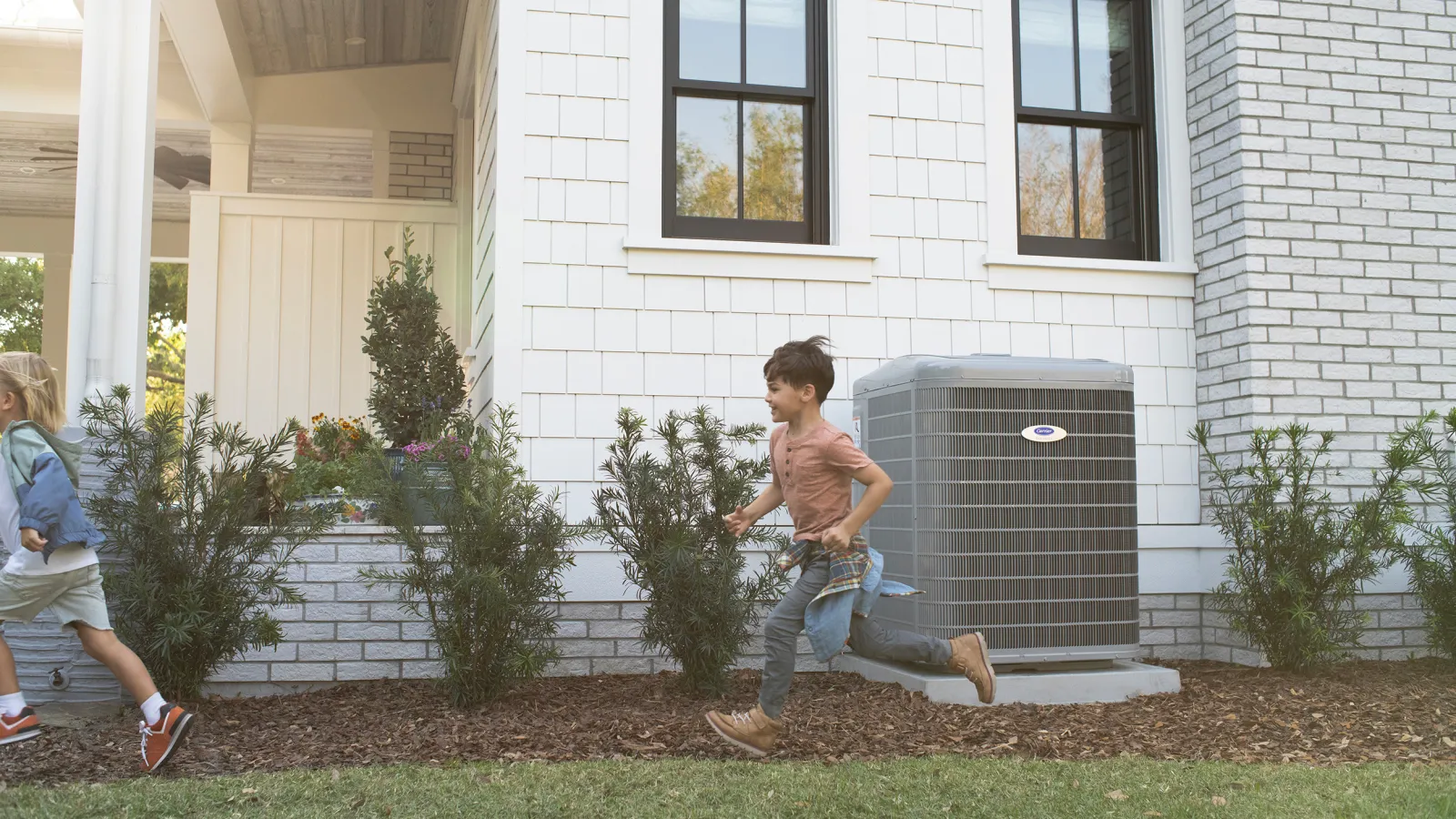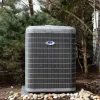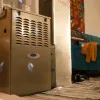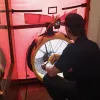Whether you’re under contract to buy a house or you’re listing a property for sale, you want to be sure the home’s heating and air conditioning system is in good working order. If it isn’t, you want to know how to make it right.
Most home inspectors only perform a rudimentary analysis of a home’s HVAC equipment. Typically, they’ll set the thermostat to “cool” to make sure the AC drops the temperature. Then they’ll set it to “heat” and verify that the furnace raises it. That’s it.
Is there value in knowing the air conditioner and furnace turn on? Sure. But there’s a lot that a home inspector’s basic tests won’t tell you.
A rigorous pre-sale inspection gives you the full scoop on a home’s HVAC system.
And it often reveals potential problems before they become real problems that affect your comfort. If you’re the kind of person who’s upset when the AC stops working in July or the furnace stops heating in January, you’ll want to fix those lingering issues ASAP.
And let’s face it: we’re all that kind of person!
When Atlanta-area homeowners or buyers contact us requesting a pre-sale inspection, we offer three different levels of service. Here’s a rundown of the types of inspections we provide.
Level 1: Standard HVAC system inspection
Although we refer to this inspection as “basic” or “standard,” it still results in valuable information that helps buyers and sellers make informed decisions. It covers the following analyses of the air conditioning system:
- Visual inspection of the condenser coil and blower wheel to determine whether they’re clean
- AC startup to verify refrigerant pressures and temperature drop for proper cooling
- Verification that the AC capacitors, compressor motor, and blower fan motor function properly
- Visual inspection of condensate drain line and verification that the system has water safety switches
- Verification that a safety switch is installed in the drain pan
- Inspection of any air filters and replacement of standard 1″ filters with new ones
The standard inspection also includes these analyses for the home’s heating system:
- Visual inspection of accessible vent pipe at the furnace
- Startup test to verify that the heating cycle functions and test temperature rise
- Ambient carbon monoxide (CO) testing at the furnace
- Visual inspection of burner flames (furnace)
- Verification that capacitors are operational (heat pump systems)
- Visual inspection of blower motor operation
Is it a relatively simple inspection? Absolutely. But it’s way more in-depth than what a typical home
the inspector offers, and it can alert you to HVAC issues that you wouldn’t know about otherwise.
For example, dirty burners are a common problem that can reduce furnace efficiency and even cause your system to stop heating. For air conditioners, a low refrigerant level could indicate a leak in the evaporator coil or the line set. Our basic inspection reveals these kinds of problems, so you can address them before the system stops working.
The standard inspection does not include repairs, cleanings, or installation of new components. It also doesn’t cover some of the more in-depth analyses you may be looking for. For things like combustion safety tests and energy audits, a home assessment is required.
Level 2. Whole home assessment
When your idea of an HVAC inspection is something that results in an action plan for optimizing indoor comfort, energy efficiency, and safety, you want a more thorough assessment. Home buyers and sellers often request a whole home assessment to find out whether a home’s attributes allow the occupants to stay comfortable all year round… or not.
This level of HVAC inspection includes everything from the standard inspection, plus several additional tests and analyses. It includes:
- Duct leakage test: This test reveals whether your ducts are leaky or inadequately connected. Functional ductwork is essential for ensuring your HVAC system performs at the highest level.
- Blower door test: This test shows us where all of your air leakages are. That way, we can identify your biggest opportunities for energy savings and comfort improvements. While the blower door is running, we explore your home with an infrared camera and snap images of air leakage areas.
- Combustion safety test: More health and safety testing than an HVAC checkup, this analysis reveals whether you’ve got carbon monoxide (CO) leaking from any gas appliances. Essentially, you’ll find out whether a cracked heat exchanger, aging furnace components and air pressure/back drafting is leaching CO into your home.
- Action plan for your home: You receive a custom report with prioritized action items based on the results of the above tests.
This type of inspection does more than ensure your HVAC equipment works properly. It goes the extra mile to reveal whether specific aspects of your home and/or ancillary HVAC components (think ductwork) are preventing your system from performing at the highest level.
Level 3. HVAC system design
When you want the most optimal possible HVAC system, you want this level of analysis. It includes the following:
- Equipment sizing: By performing a room-by-room analysis called a load calculation, we can determine what size HVAC system the home needs to have.
- Ductwork design: What size should the ducts be to properly deliver air to all areas of the home? How long (or short) should the duct runs be? What sizes should the plenum boxes be? We analyze your home to answer all of these questions.
- Airflow testing: To ensure comfort under all conditions, every home requires a certain amount of airflow to each room. This analysis determines how much air (expressed as cubic feet per minute, or CFM) a room needs versus what it’s currently receiving.
In the end, you’ll know what size and type of HVAC equipment you should have as well as what type and size of ductwork you need – and where those ducts should run. That’s great information for any homeowner to have, but when is it really practical to have a professional perform this level of analysis as part of a home sale? Here are a few situations where it might make sense:
- The existing HVAC system is very old. If the buyer is likely to replace the HVAC system because it’s over 12 years old and breaks down a lot, this analysis helps to ensure the new system is as problem-free as possible.
- You’re the seller, and you want to advertise the home as having great HVAC. Pretty self-explanatory. Assuming you take action on the design recommendations, you can show potential buyers that they’ll have minimal HVAC issues after buying your home.
- You’re the buyer, and you want all things HVAC to be as perfect as possible. If you want to optimize HVAC performance before or soon after you move in, this is the analysis you want.
- You have a hunch the existing HVAC system is oversized. It’s a common problem. Sellers may know the existing system does a poor job removing humidity, that it short cycles, and that the air moving through the ducts is curiously loud.
- You anticipate an HVAC system replacement in the next few years. Sometimes, buyers just want to plan and know what kinds of HVAC investments they’ll need to make if they buy a particular property.
Choose the inspection option that makes the most sense.
The choice is yours! Select the type of inspection that gives you the information you need to make an informed decision about a home purchase – or to address any HVAC-related concerns of your buyers.
Remember that these inspections and analyses are just that: inspections and analyses. They don’t necessarily include any follow-up services. Rather, they alert you to existing problems and potential issues that you may want to address during the pre-sale process.
Regardless of which inspection you choose, you’ll learn ways to achieve a more optimal HVAC situation for the home. That’s a win for buyers and sellers alike.






